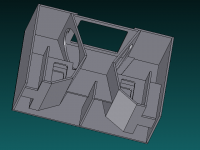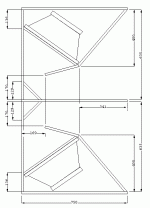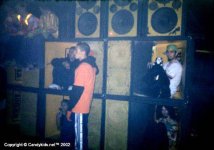so i was just curious on two subwoofer cab designs i have one is from the proven turbosound tsw 718 ad the other is from another unfinished website for speaker designs. i Really curious on your guys input of the ported vs unported design
<embed src="http://imageshack.us/slideshow/smilplayer.swf" width="426" height="320" name="smilplayer" id="smilplayer" bgcolor="FFFFFF" menu="false" wmode="transparent" type="application/x-shockwave-flash" pluginspage="http://www.macromedia.com/go/getflashplayer" flashvars="id=imageshack/"/>
<embed src="http://imageshack.us/slideshow/smilplayer.swf" width="426" height="320" name="smilplayer" id="smilplayer" bgcolor="FFFFFF" menu="false" wmode="transparent" type="application/x-shockwave-flash" pluginspage="http://www.macromedia.com/go/getflashplayer" flashvars="id=imageshack/"/>
matthias... you need to fix your links or better still if they are just images is to upload them directly 
Too add a photo.
First click "go advanced" in the box below the "quick reply" message box. Doesn't matter if you decide half way through a message to do that, it carries it foward.
Then click "Manage attachements". Maximise the new Window so that you can see all the text.
Click browse in the first box at the top and find your picture. Repeat for any more pictures.
Click upload... a message appears "uploading"
When complete the files will show as being attached. Now click the small text that says "close this window"
The pictures should now be attached and when you submit your post they will appear.
Make sure your pics aren't too big, a couple of 100k is plenty, and many members object when they are massive and it alters the margins
It tells you in the attachments window what max sizes are allowed.
If you want to attach a file that has a non standard format for example excel, circuit simulation etc then try putting the files in a zipped folder and attaching that.
Too add a photo.
First click "go advanced" in the box below the "quick reply" message box. Doesn't matter if you decide half way through a message to do that, it carries it foward.
Then click "Manage attachements". Maximise the new Window so that you can see all the text.
Click browse in the first box at the top and find your picture. Repeat for any more pictures.
Click upload... a message appears "uploading"
When complete the files will show as being attached. Now click the small text that says "close this window"
The pictures should now be attached and when you submit your post they will appear.
Make sure your pics aren't too big, a couple of 100k is plenty, and many members object when they are massive and it alters the margins
It tells you in the attachments window what max sizes are allowed.
If you want to attach a file that has a non standard format for example excel, circuit simulation etc then try putting the files in a zipped folder and attaching that.
so i was just curious on two subwoofer cab designs i have one is from what i believe is the proven turbosound tsw 718 the other is from another unfinished website for speaker designs. i Really curious on your guys input of the ported vs unported design for a horned sub box.
Attachments
hi matthias
wel you have to simulate the driver to see if it works in each cab.
the ports in the left design is to limmit excusion at port tuning frequentie.
below that excursion rizes rapidly.
both are bandpass horns ,i guestimate the wil rol off at 50 or so ,looking at the short horn.
they wil be verry efficient.
wel you have to simulate the driver to see if it works in each cab.
the ports in the left design is to limmit excusion at port tuning frequentie.
below that excursion rizes rapidly.
both are bandpass horns ,i guestimate the wil rol off at 50 or so ,looking at the short horn.
they wil be verry efficient.
Hi matthias125,
Ported horns are used for a long time. The ports are usually used to extend the bandwidth (bandpass) of such horn. An issue that should be considered with ported horns is that the excursion at the lowest part of the bandpass (there were the port is active) increases considerably.
What happens is that the efficiency of horn is traded for the less efficient port to give it a low end extension. Less efficient means that the driver needs to work harder to keep up with the rest of the horn-design. For instance, if you would use the same driver/concept of the Turbo Sound you mentioned and you would add a port, the frequency range (bandpass) could be extended but at cost of higher excursion. In practice that would mean the PD driver would run out of excursion very soon.
Tapped Horns also have two sides of the cone loaded. Therefore you can kind off compare them with ported horns. The difference is that Tapped Horns (sometimes described as a tapped pipe) have both sides of the cone loaded by the same horn/pipe. Since horns or pipes (both quarter wavelength resonators) are more efficient than ports (half wavelength resonator), the tapped horn becomes more efficient in the low end compared to ported horns. More efficient means lower excursion so the Tapped Horn will have more output in the lowest part of the bandpass, compared to a ported horn.The downside is that higher up the bandpass the 'true horn' of a ported horn becomes more efficient than the tapped horn.
In classic designs like the Nexo 1000 and 2000 range for instance, they also made use of a ported horn design. To prevent the excursion from going too extreme they made the ports smaller in diameter. In practice that would mean that the ports run into compression at high levels to prevent extreme excursion. This is a designer trick that needs careful study to make it work correctly. One needs to design for a specific driver and lots of testing needs to be done. The downside of this trick is that at high levels the low end stays behind. It works like a kind of dynamic EQ but than in a mechanical way.
Ported horns are used for a long time. The ports are usually used to extend the bandwidth (bandpass) of such horn. An issue that should be considered with ported horns is that the excursion at the lowest part of the bandpass (there were the port is active) increases considerably.
What happens is that the efficiency of horn is traded for the less efficient port to give it a low end extension. Less efficient means that the driver needs to work harder to keep up with the rest of the horn-design. For instance, if you would use the same driver/concept of the Turbo Sound you mentioned and you would add a port, the frequency range (bandpass) could be extended but at cost of higher excursion. In practice that would mean the PD driver would run out of excursion very soon.
Tapped Horns also have two sides of the cone loaded. Therefore you can kind off compare them with ported horns. The difference is that Tapped Horns (sometimes described as a tapped pipe) have both sides of the cone loaded by the same horn/pipe. Since horns or pipes (both quarter wavelength resonators) are more efficient than ports (half wavelength resonator), the tapped horn becomes more efficient in the low end compared to ported horns. More efficient means lower excursion so the Tapped Horn will have more output in the lowest part of the bandpass, compared to a ported horn.The downside is that higher up the bandpass the 'true horn' of a ported horn becomes more efficient than the tapped horn.
In classic designs like the Nexo 1000 and 2000 range for instance, they also made use of a ported horn design. To prevent the excursion from going too extreme they made the ports smaller in diameter. In practice that would mean that the ports run into compression at high levels to prevent extreme excursion. This is a designer trick that needs careful study to make it work correctly. One needs to design for a specific driver and lots of testing needs to be done. The downside of this trick is that at high levels the low end stays behind. It works like a kind of dynamic EQ but than in a mechanical way.
Last edited:
Hi matthias125,
"So the turbo sound design would be more efficient with less excursion? but the ported design could reach lower tuning freq more easily but at the cost of higher excursion risking the life of the driver"
Yes, that is right.
That is the reason why you see relative high tunings for so called ‘hybrid-horns’ (relative short horns with basreflex ports). Usually these basreflex port(s) are tuned at or above 50Hz for conventional 18" drivers.
"So the turbo sound design would be more efficient with less excursion? but the ported design could reach lower tuning freq more easily but at the cost of higher excursion risking the life of the driver"
Yes, that is right.
That is the reason why you see relative high tunings for so called ‘hybrid-horns’ (relative short horns with basreflex ports). Usually these basreflex port(s) are tuned at or above 50Hz for conventional 18" drivers.
although the dynamic sound of a tru bashorn is almost unsurpassed,nowadays ,with the power cheaply available,its not realy nessecerry anymore.(imho)
a horn to 35 hz needs to be realy big(i,m talking thousands of liters)
you could always compromise/truncade the horn,and stack them but its still gona be big.
this is why the tapped horns are popular her at the diyaudio.
more efficient as bassreflex and much smaller then a front loaded horn.
if you still want to go for a flh ,you need to decide on driver type and see what you can do with it in simulation.
e
a horn to 35 hz needs to be realy big(i,m talking thousands of liters)
you could always compromise/truncade the horn,and stack them but its still gona be big.
this is why the tapped horns are popular her at the diyaudio.
more efficient as bassreflex and much smaller then a front loaded horn.
if you still want to go for a flh ,you need to decide on driver type and see what you can do with it in simulation.
e
You can tune the BR/horn design to 35 Hz, but it won't be as efficient as a tapped horn of similar size and shape, a TH can be as much as 6 dB more effecient (per driver) than a BR of the same Fb.Unfortunately im in love with the horizontal design. Making it easy to stack. So over all niether of these designs would be able to be tuned to 35hz?
Also remember that lower tunings reduce efficiency, so the relative efficiency of the horn in the 60-160 Hz region where it works makes the lower tuning seem like even less bass.
This one has proven to work very well:Can you link up a few th horn designs. Thats have proven efficiency down to 35hz that you know of
http://www.diyaudio.com/forums/subwoofers/185588-keystone-sub-using-18-15-12-inch-speakers.html
Josh Ricci's Othhorn
http://www.diyaudio.com/forums/subwoofers/193418-othorn-tapped-horn.html
and Gjallerhorn go lower, but are larger, though the flatter shape may be more what you are looking for.
Art Welter
Last edited:
any opinions to the mini scooper design orignal when i started off on the this audio adventure one of the design that i really took from that i was familiar with the sound was the hold tonka subs which looks like two mini scoopers staked on top of each other with 15'
Mini Scooper 18
Mini Scooper 18
Attachments
My opinion is that the tapped horns previously mentioned in post #13 sound better, go lower, and have more output per truck space than the scoop designs I have heard.any opinions to the mini scooper design orignal when i started off on the this audio adventure one of the design that i really took from that i was familiar with the sound was the hold tonka subs which looks like two mini scoopers staked on top of each other with 15'
- Status
- This old topic is closed. If you want to reopen this topic, contact a moderator using the "Report Post" button.
- Home
- Loudspeakers
- Subwoofers
- Dual horned sub cab ported design vs ported?


